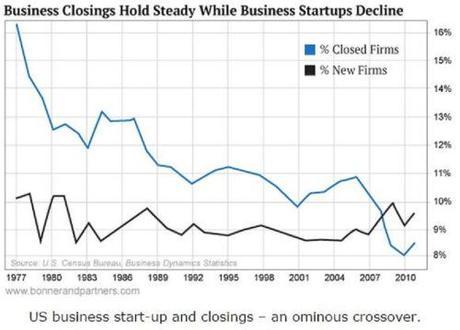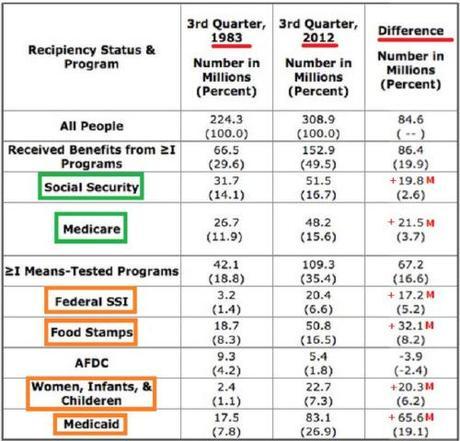Barack Obama’s 2012 campaign slogan was “Forward!”
Little did his supporters know that he’s leading America “forward” to years of economic stagnation — a prognosis, not by his detractors, but by none other than Obama’s own 2016 budget proposal.

Howard Scheider and Jason Lange report for Reuters, Feb. 2, 2015, that underlying Barack Obama’s proposed budget plan “to fight income inequality” lies a gloomy view of an economy that is growing slower and creating fewer rewards for its workers than it did in much of the last century.
In a $3.99 trillion budget proposal unveiled yesterday, the White House proposes a spending increase of about $240 billion from the current year. At the same time, the proposal cuts forecasts for an array of economic variables, depicting less growth, weaker inflation and lower interest rates than officials expected only a year ago.
This comes despite an unemployment rate that the Obama administration expects to hit the 5.2% level considered to be roughly in line with full employment sometime this year.
Note: Of course, the Obama administration and his ever-loyal boosters in the MSM neglect to tell you that the official unemployment rate is deceptive, in that it leaves out the millions of Americans who have dropped out of the labor market altogether because they simply no longer look for work. (See “Record number of Americans (92m) not in labor force”)
The administration’s take on the economy moves it closer to the growing view among economists that the United States could be stuck in a prolonged period of stagnation. “In the 21st century, real GDP growth in the United States is likely to be slower than it was in earlier eras,” the budget proposal admits.
The economic vision presented in the plan is all-the-more pessimistic given that it incorporates the impact of higher spending on infrastructure and education, as well as overhauls of tax and immigration laws. Even with these measures, which are aimed to counter rising income inequality, weaker growth would leave the U.S. economy about $500 billion smaller in 2020 than the administration projected a year ago. The share of national income going to labor – as opposed to capital – is expected to to hold near historic lows for years to come.
One of the reasons for the prolonged economic stagnation to come is America’s aging population that is less inclined to work, attributed by Obama’s budget proposal to limit long-term economic growth to around 2.3% annually, a rate that would be roughly a percentage point lower than the average since World War Two.
In the White House view, the jobless rate could drop to as low as 4.9% in 2017. But even that is not expected to lead to substantial wage or price increases, suggesting officials are sympathetic to stagnation arguments made prominent by economists, such as former Treasury Secretary Lawrence Summers, who have argued the government should spend more to make up for weak private sector demand.
As for interest rates, the Obama White House now sees interest rates holding lower for years even under the assumption that the government boosts spending substantially, something that in other eras would lead lenders to jack up interest rates more. The budget proposal says: “The administration forecast projects that interest rates will stabilize below their historical averages,” while inflation is expected to remain low for years to come.
Long-term low interest rates, in turn, mean retired Americans who have been frugal savers will continue to see their savings eroded.
Meanwhile, the fact that for the first time ever there are more U.S. businesses closing than starting up, surely doesn’t help. (See “Why U.S. economy stinks – in two graphs”)

Nor does the ever-expanding welfare state wherein, in just 19 years from 1983 to 2012, the number of Americans receiving food stamps increased 32.1 million, and those receiving Medicaid exploded by a whopping 65.6 million.

~Éowyn

